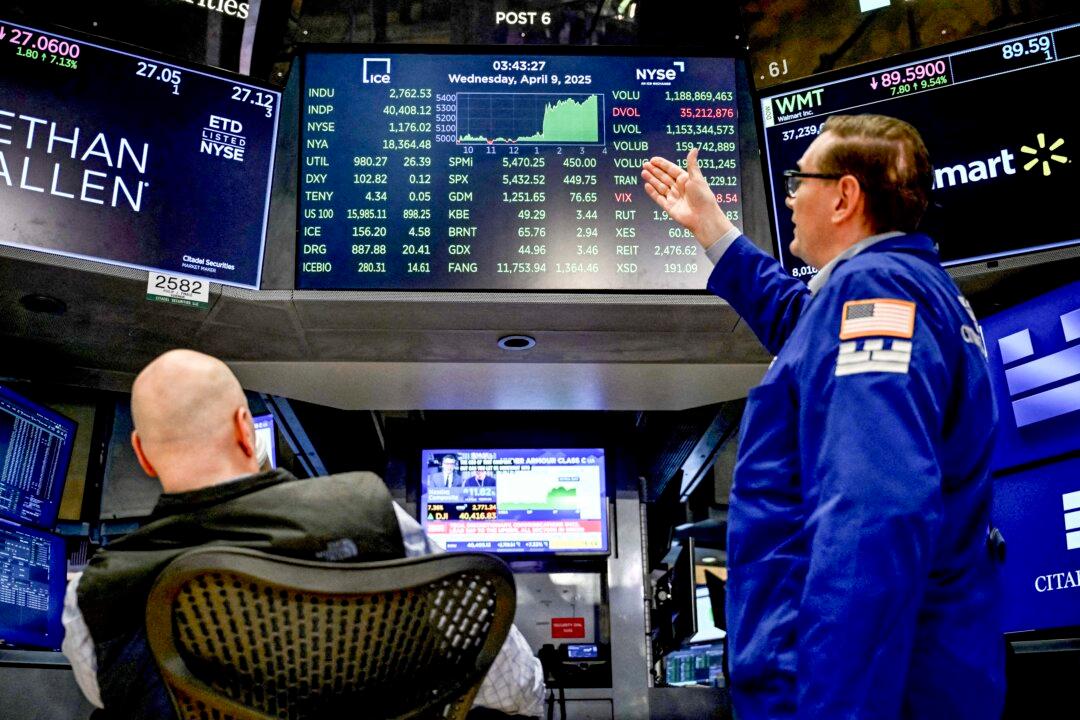As President Donald Trump announced this week that he was going forward with a more than 100 percent tariff on China and a 10 percent tariff on the rest of the world, pending a 90-day negotiation period, the world and financial markets seemed to breathe a sigh of relief.
Common belief holds that any tariff is negative; however, the reality is more nuanced and not necessarily what conventional wisdom holds.
Textbook trade economics begins with Scottish economist Adam Smith using a simple theoretical model where Scotland and Portugal engage in mutually beneficial trade of wool and wine. Countries were better off trading with each other without tariffs. Most economists utilize this intellectual framework when conceptualizing the benefits of international trade.
However, modern trade is quite different from the textbook examples of 17th-century Scotland. For instance, when Smith was writing, Scotland had no possibility of growing wine in Scotland’s cold, damp climate. Put another way, both countries in the original model enjoyed a type of monopoly on what they produced, much like oil producers today. That oil cannot be produced in other countries because they do not have oil reserves.
In reality, modern trade depends heavily on very different dynamics. For instance, network effects have a major impact on international trade. Network effects simply mean nearby related industries and businesses that help foster a broader competitive advantage. Think of financial services in New York or London or technology in Silicon Valley as a simple example; the same holds for tradeable products. China has spent years building a local network of industries that assist its total manufacturing output; however, that does not make it permanent.
In another example, the original trade models used by Smith did not consider the role of mobile global capital. Labor may not be mobile across borders, but capital can be very mobile. If capital is mobile across borders, taking the most extreme example, what is the price difference between employing a robot in the United States, Africa, China, or Europe? Fundamentally, there is no price difference, and that robot will produce the same amount of output regardless of where they are plugged in.
However, counterintuitiveness applies not simply to the economics of international trade but also to the imposition of tariffs based upon countries that cooperate and countries that do not. Broadly speaking, countries that cooperate to actively reduce tariffs benefit from having low mutual tariffs, but in a conflict setting, countries can benefit from raising tariffs. Most importantly for the current debate, large countries, like the United States, when facing a trade conflict where a counterparty is cheating, can benefit from increasing tariff rates.
The insights have direct relevance to the trade war today, as a key finding was that the liberalization of trade between a small group of countries that maintain trade barriers on targeted third-party countries can gain much more, as the benefits from trade are shared more directly. Put another way, if President Donald Trump can strike deals with key countries like Vietnam, India, Mexico, Canada, Europe, and Japan while working to maintain barriers on China, this increases the benefits from trade to the liberalizing states and away from China.
The vigorous debate of a democracy should include questioning our leaders and the information we rely on to make decisions. The reality of economic research paints a more nuanced picture of how we should approach negotiating trade agreements with China and other countries. The conventional wisdom that any tariff is bad simply does not represent reality.







